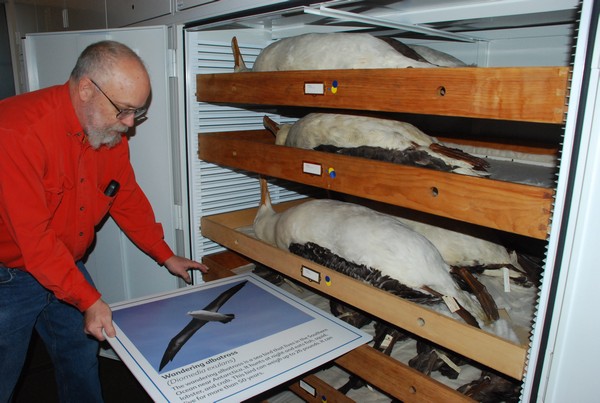
Carnegie Museum is full of wonders.
Last Saturday about 50 of us went behind the scenes in the Section of Birds where we learned that…
- The albatross cabinet smells fishy because the albatrosses’ bodies smell like fish. Collection Manager Steve Rogers shows us the wandering albatross above.
- A brown-headed cowbird’s egg is really much larger than a red-eyed vireo’s. Here’s a clutch of vireo eggs parasitized by a cowbird.
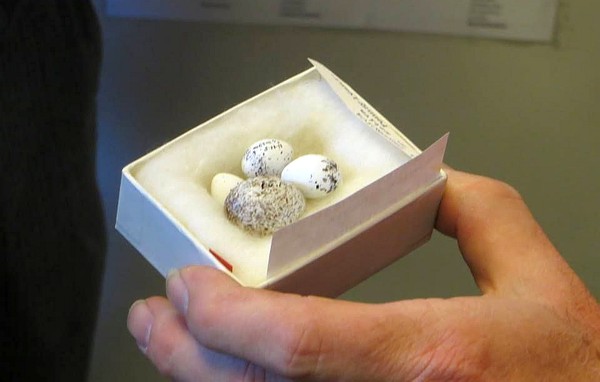
- Females in the genus Cotinga, native to Central and South America, look very different from their mates. Below, female spangled cotingas are dull brown while the males are iridescent turquoise with purple throats.
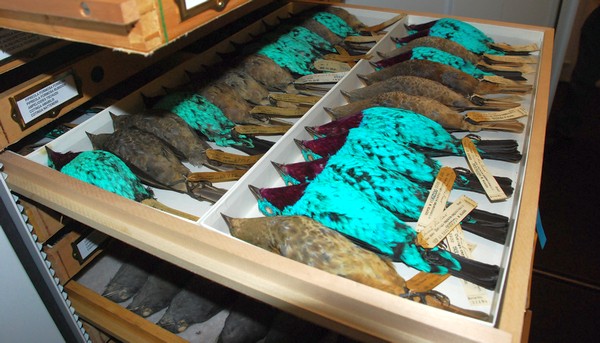
- The spotted sandpiper lays eggs that are larger than her head! Here I’m looking at her egg through a magnifying glass. Oh my! How does she do it?
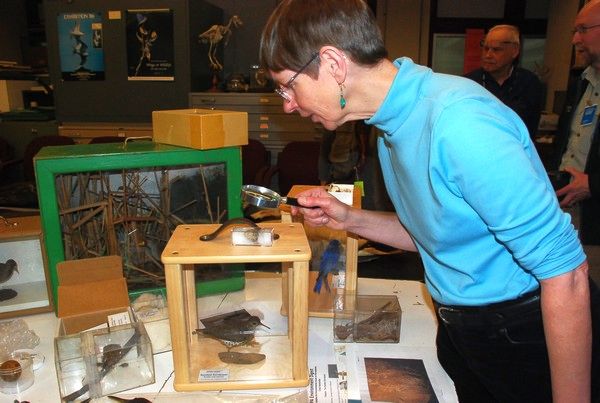
Her sex life is even stranger than her large egg shown below. Pat McShea explained that spotted sandpipers are polyandrous. The female lays a clutch of four eggs but hardly incubates them if other males are available. Instead her mate handles incubation as she leaves him for another male, mates with him and lays another clutch of four. She can do this up to three times in one season! Her job is to lay those enormous eggs.
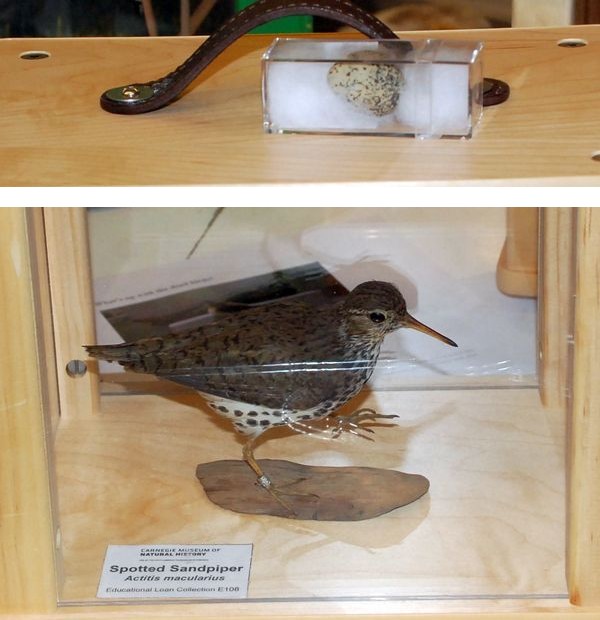
Thank you to Steve Rogers, Pat McShea and all the folks at Carnegie Museum who showed us the Collection’s wonderful birds.
This is the last article in my Carnegie Museum series but it’s not the last of the museum. You can visit Carnegie Museum of Natural History any time, except on Tuesdays when they’re closed. Make plans for your visit here.
(photos by Donna Foyle and Doug Cunzolo)
Thanks, Kate, for arranging the opportunity to go behind the scenes. It was fun and enlightening!
Thanks again Kate Judi & I had a great time viewing all that stuff. Sorry I couldn’t get more photos, too many heads arms & phones in the way. We had a very nosy group.
My husband and I had a great time.